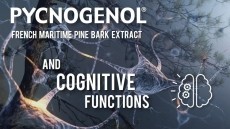Age-related eye disease: Promising evidence of supplements’ benefits but longer studies needed

Approximately 250 million people worldwide suffer from varying degrees of vision loss, with the leading causes including common eye conditions such as cataracts, age-related macular degeneration (AMD), glaucoma, and diabetic retinopathy (DR), which largely affect older adults.
While the origins and causes of age-related eye diseases are complex and multifactorial, oxidative stress has been implicated as a common conducive mechanism.
It has long been hypothesized that antioxidants may be of benefit in retaining better vision or even reversing vision impairment, so researchers sought to assess the existing evidence for carotenoids (lutein and zeaxanthin), anthocyanins (saffron and bilberry), and vitamins (vitamin A) in the context of treating or preventing age-related eye diseases.
In terms of lutein and zeaxanthin, they cited studies showing that intake can decrease the risk of developing age-related macular disease.
“Several studies have demonstrated evidence of an inverse relationship between the presence of lutein and zeaxanthin in the retina and the risk for AMD,” they noted, adding that “A reduction in genetic risk for AMD among individuals with high lutein and zeaxanthin intake has been observed among several cohorts.”
In relation to saffron they stated that it may exert a protective effect in patients with glaucoma.
Oral consumption of aqueous saffron extract for three weeks was able to reduce intraocular pressure (IOP) in primary open-angle glaucoma after three weeks.
Bilberry extract, meanwhile, may also alleviate the symptoms of dry eye disease.
“The volume of tear secretion has shown improvement with bilberry extract supplement among subjects over four weeks, as well as a significant improvement of biological antioxidant potential,” they wrote.
“Apart from that, long-term consumption of bilberry extract can slow down axial elongation and control myopia progression in children with high myopia.”
Future research
In relation to beta-carotene, the paper notes that The Age-Related Eye Disease Study (AREDS) demonstrated that daily oral supplementation with antioxidative vitamins and minerals (vitamin C, vitamin E, beta-carotene, zinc, and copper) reduced the risk of developing advanced AMD by 25% at five years, as well as a significant reduction in rates of at least moderate visual acuity loss.
Despite the evidence for specific antioxidants impeding certain age-related eye diseases, the researchers argued there was a lack of extensive studies on their effects on various ophthalmic diseases.
Furthermore, most studies were concluded within a short period of time.
The called for more detailed research to be undertaken, but concluded: “High concentration of carotenoids such as lutein and zeaxanthin decrease the risk of developing age-related macular disease; anthocyanins and vitamins play a role in the treatment and prevention of other ophthalmic diseases: saffron extract reduced intraocular pressure in glaucoma patients; bilberry extract prevented impairments in lenses and retina, as well as alleviate symptoms of dry eye disease; high concentration of beta-carotene may reduce the risk of developing cataract.
“Further studies with clinical measurements are required to investigate the effectiveness of antioxidants on visual function and ophthalmic diseases.”
Source: Biomed Res Int
Review of Evidence for the Usage of Antioxidants for Eye Aging
Authors: Priscilla Peixi Choo, et al




















